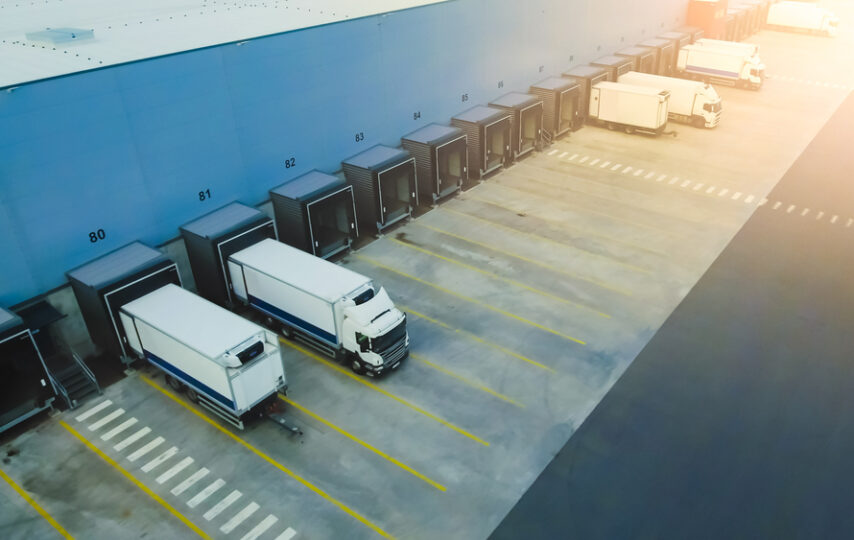Cross-docking expeditiously and effectively links suppliers, resellers, and customers in the fast-paced world of today. That’s why businesses in a variety of industries started choosing it as their shipping option.
This article explains the cross-docking method and examines the role that technology plays in it. We’ll examine how software can assist in handling difficult jobs and offer some advice on how to handle cross-docking.
But cross-docking is only useful if done correctly, which requires a lot of work. The location and design of the facility must be carefully evaluated, the right equipment must be installed, and handling tasks must be planned, but above all, a schedule that is ideal for both the inbound and outgoing flow of goods must be created. And that’s where digital technology plays an important role.
How does cross-docking operate, and what is it?
Cross-docking is a logistics technique that involves distributing goods straight to a consumer or retail reseller from the producer or supplier, needing little handling or storage time in between.
As the traditional supply chain suggests, goods are not stored in a warehouse but rather are brought in through one door and swiftly transported to their next location through another door. Businesses use cross-docking to expedite the supply chain, lower storage expenses, and guarantee swift delivery of goods to customers.
Cross-docking process
Receiving goods: Typically, products are delivered in trucks or rail containers to the cross-docking terminal.
Unloading: Incoming vehicles’ contents are right away removed.
Sorting: The products are sorted in the docking terminal after being unloaded. This sorting is done based on the kind of product or where they are going to end up.
Transferring: Using a forklift, pallet truck, conveyor belt, etc., the items are moved from the receiving dock to the departing shipping dock following sorting. There isn’t any intermediate storage. The goods are just moved across the dock (though occasionally they may go through extra steps like packaging, kitting, or quality inspections). Consolidation occurs when products from several suppliers are combined into a single truckload.
Delivery loading: The sorted goods are loaded onto trucks or trains at the shipping dock.
Delivery and continuing transportation: At last, these loaded trucks leave the cross docking facility to deliver the merchandise to clients, retail establishments, or other designated sites. Let’s take a moment to clarify what the docking terminal is and how it differs from a typical warehouse since we mentioned it in our description.
Businesses Requiring a Logistics Firm
Here the list of Business that requiring Logistics Firm:
- manufacturing and Distribution Industries
- Retailers
- Restaurants
- Transportation Industry
- Automotive Industry
- Pharmaceutical Industry
- Technology Industry
- Retail Stores
- Medical Industry
- Education Industry
Digital technology’s function in cross-docking
Tracking in real time
Business challenges include lengthy and prone to error manual checks, as well as a lack of visibility into incoming inventory and item locations.
Technological solutions include RTLS, asset tracking systems, and inventory management systems. Quick cross-docking is required. It is not possible to impede the entire process by wasting time searching for misplaced shipments. You need to be aware of everything that enters the building, where every item that has been received is at any given time, and what happens to it after that.
Tracking systems enable you to precisely identify inventory, know where items are located in the cross-docking facility, and expedite handling tasks. They typically use RFID (Radio-Frequency Identification) and barcoding. By reading barcodes or RFID chips and comparing the data to the load lists in the system, staff members can track objects within the building.
Efficiency Optimization in track Industries
Cross-docking can be innovative for carriers and other companies looking for ways to optimize distribution and satisfaction operations and obtain a competitive edge, even though it necessitates careful planning and coordination. Carriers can handle many of the difficulties involved in last-mile logistics by cutting storage time, improving routing, and consolidating, which increases productivity, lowers costs, and improves customer service.
Cross-docking maximizes space utilization by allowing items to be loaded onto delivery vehicles quickly and moved through a facility quickly. Carriers can precisely track the movement of items once they are dispatched for last-mile delivery when operations are integrated with sophisticated tracking systems. Enhancing customer satisfaction is the result of giving customers access to this precise tracking information instantly.
Conclusion
Cross-docking isn’t always the simplest course, but it can advance your supply chain a great deal. It will take a great deal of time and money to set it up correctly. Starting with a single stock keeping unit (SKU) or product group from a single supplier and monitoring the situation from there is a good practice. You can then progressively scale them to other inventory, develop your technologies, optimize operations, and enjoy the benefits as you test and refine your workflows.



